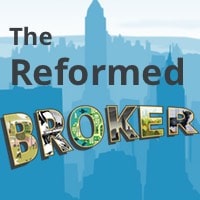
Frank Partnoy is a UC Berkely law professor and an expert on securities law. He wrote one of my favorite stock market books ever, The Match King, about one of the biggest corporate frauds of all time, which I wrote about here.
Partnoy has a new article in The Atlantic this week looking at a hidden systemic risk to the banking system that no one else seems to be particularly concerned about – the market for CLOs.
CLOs are Collateralized Loan Obligations – which are securities that bundle the debts of companies that are already very leveraged and potentially in trouble – like AMC Theaters or Party City. Partnoy explains that because they are comprised of tranches, or various layers of risk, the CLO holdings of large banks like Wells Fargo, which carries $29 billion worth of these securities on its books, have flown under the radar. Wells, Citi, JPMorgan and other large institutions are predominantly dealing in the top layer of CLOs, referred to as AAA, which have a very low level of default risk historically.
Partnoy makes the case that this perceived safety of these AAA-rated CLO tranches have never been stress-tested in an environment like the one we’re in – where every region of the country and every sector of the economy are simultaneously challenged. They remind him of the so-called AAA-rated mortgage securities that eventually blew up during the previous financial crisis when they were supposed to have been safe.
For the moment, the financial system seems relatively stable. Banks can still pay their debts and pass their regulatory capital tests. But recall that the previous crash took more than a year to unfold. The present is analogous not to the fall of 2008, when the U.S. was in full-blown crisis, but to the summer of 2007, when some securities were going underwater but no one yet knew what the upshot would be.
What I’m about to describe is necessarily speculative, but it is rooted in the experience of the previous crash and in what we know about current bank holdings. The purpose of laying out this worst-case scenario isn’t to say that it will necessarily come to pass. The purpose is to show that it could. That alone should scare us all—and inform the way we think about the next year and beyond.
Partnoy’s worst-case scenario is not a foregone conclusion, of course. But understanding these things now will be helpful should things begin to get materially worse. I would recommend you find some time to read his piece, which I link to below. By the way, I hate the title the magazine’s editors chose for the article, but we all know clicks are the name of the game.
Leave a Reply